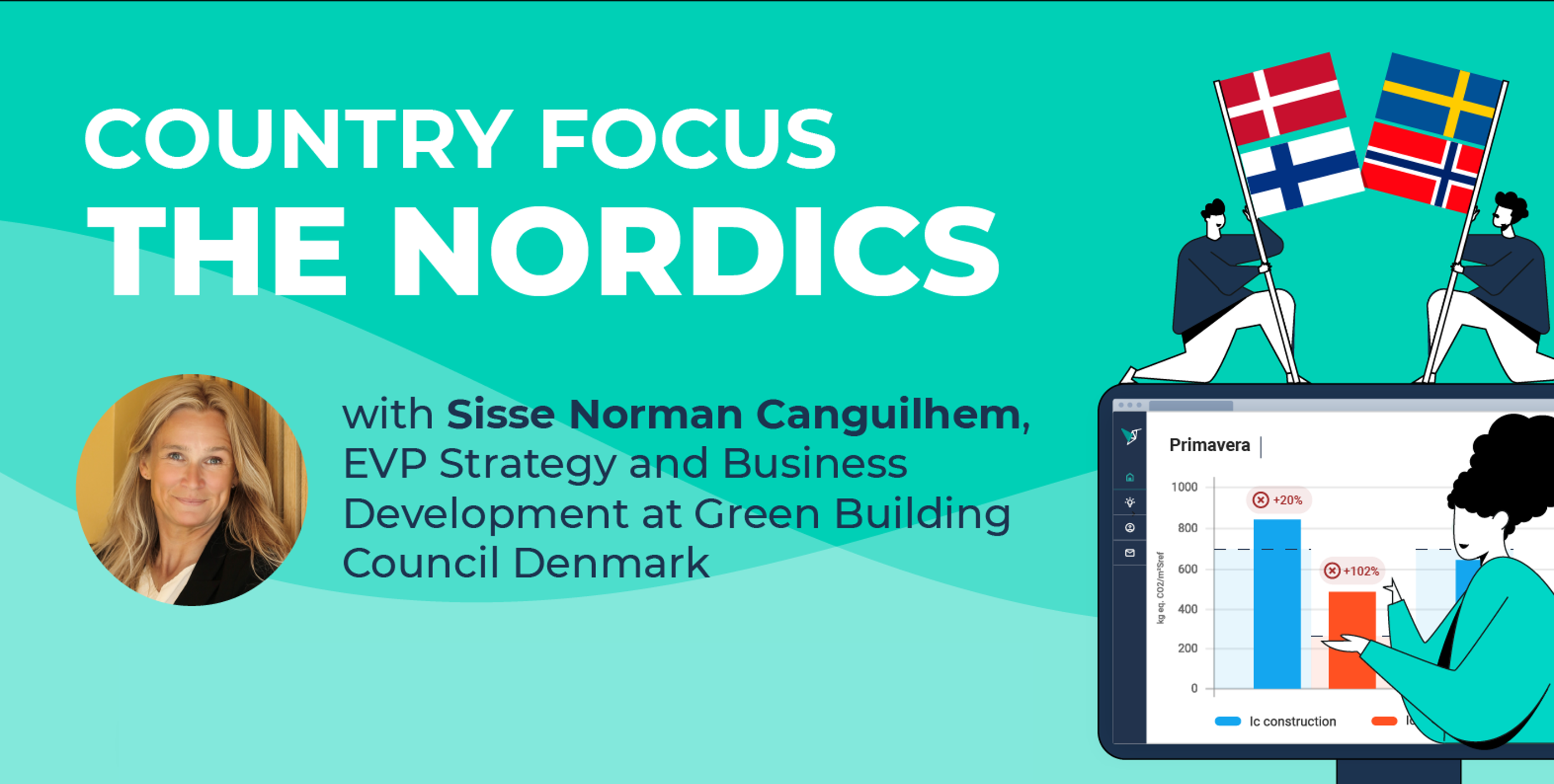Denmark took a significant step forward on 1st January 2023, with the introduction of an embodied carbon limit for new buildings over 1,000 square meters, capping emissions at 12 kg CO₂e per square meter. This first-of-its-kind regulation aimed at addressing carbon emissions from the entire life cycle of a building, with biennial adjustments planned to tighten these limits over the coming years. Denmark’s approach allows flexibility to respond to industry innovations and new climate targets, creating a pathway toward a more sustainable built environment.
The Danish groundwork for this regulation began over a decade ago. Since 2010, Life Cycle Assessments (LCA) have been a part of the voluntary DGNB certification, and in recent years, demand for these certifications has grown significantly, now covering around 50% of large-scale new constructions.
Differentiated standards to reflect building types
The regulation is underpinned by a clear roadmap that differentiates between building types, recognizing that some can meet stricter standards more easily than others. For instance, the general limit has been set at 7.1 kg CO₂e/m² for most buildings, with slightly higher values for schools and public buildings due to unique requirements, while limits for single-family homes and office buildings fall within lower ranges. The roadmap includes stricter limits set to take effect from 2025, 2027, and 2029, with revisions planned through political negotiations to reflect advancements and feasible targets over time.
There is an ambition within the ongoing discussions around Denmark regulations to expand the scope of Life Cycle Assessment (LCA) to encompass emissions from various phases of construction and the overall lifecycle of a building. This could include recognizing emissions related to transportation and demolition, moving toward a more comprehensive understanding of a building’s total carbon footprint. Our hope is that this will foster further innovations in the field and set the bar for what sustainable construction should look like.
The role of industry and private sector initiatives
One of the key drivers of this progress has been the active engagement from the private sector. Recently, over 630 Danish companies, including major construction and material firms, willingly committed to reducing their embodied carbon emissions in line with the Paris Agreement’s 1.5°C target. While recently, a group of architects calculated that the construction sector would need to reduce emissions by over 90% compared to current levels to remain aligned with the Paris Agreement's target, this voluntary initiative has created significant momentum, demonstrating that our industry is willing to tackle even the most ambitious goals.
Adapting regulations for today’s climate goals
Our current building codes stem from historical contexts, often tied to safety standards following major events, like the fires that shaped Copenhagen’s construction regulations over a century ago. To achieve today’s sustainability goals, it is essential to revisit and revise these outdated codes. Denmark’s new framework, therefore, takes into account not only present needs but also anticipates the kinds of buildings and cities we want to leave for the future. This is not just a regulatory update but a necessary evolution in building practices that reflects our commitment to a low-carbon future.
Towards a future of low-carbon innovation
These embodied carbon regulations set Denmark on a path towards transformative change in the construction sector. By embracing LCAs and supporting private sector ambition, we aim to go beyond current targets and develop a resilient, sustainable framework. This proactive approach demonstrates that regulating embodied carbon is not only feasible but also essential for any country looking to make a real impact on global climate targets. The Danish construction industry stands ready to lead by example, pushing the boundaries of what’s possible and paving the way for a sustainable future in the built environment.




.png)